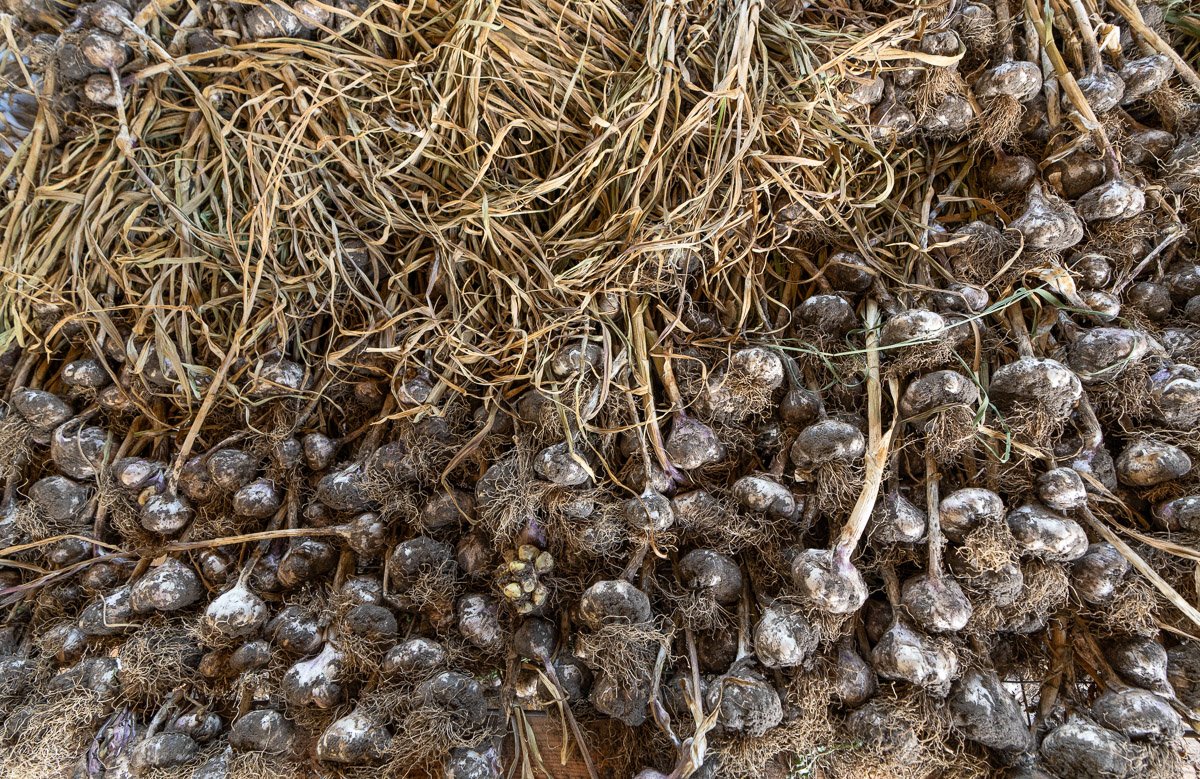Below me, and just inches above one of our dozen beds of carrots that are still growing, a caterpillar tracks across the field on top of insect netting. And in the next pasture, starlings that look like they are gathering for a murmuration — a giant flock, like a moving organism across the sky, beckons. This time of year is tracked by all the things to do, and all the things happening around us. Some of them are part of a routine schedule. Zukes and Radish, the farm cats, hunt along the mainline in the evenings; fruits steadily ripen according to the daylight and temperature, aphids wander pepper plants until met by the assassin bugs we’ve released, our packshed hums and grunts and doors from the new building open and close as we fill up the coolers daily. Other things run off a less nuanced schedule, both part science and good management, but also gut and seasonal rhythm.
After all, it’s a harvest day here and everyone on the team, seven of us today, should all be harvesting. But we are not. I’m getting some bills in the mail, sneaking in a hour on a secret farm project, taking care of some repairs, and getting at least 100 pounds of melons off to a chef before I harvest several hundred more this evening. And some of the crew — including a second shift in the evening with Mary and I, are transplanting fall and winter crops. This is kind of an amazing thing, where at peak season, we take out crops (in the latest round it was cucumbers past their prime), replenish the soil with farm-made compost, and put in transplants that will fill your need for greens in winter—or buffer against sub-zero October tempratures. It’s a wild thing, to do this when we are tired, exhausted, and recruiting and training new team members for winter and beyond, all while garlic needs to be braided, onions need to be bagged and get out of the shop and greenhouse, all while transplants need to go and and, behind the scenes, we gear up for transitioning seasons and bulk harvests to come: carrots, winter squash, potatoes and a lot more. With seeding to do in the greenhouse, for winter crops, I’m not sure Mary will even be at market tomorrow.
But, with all that said, there’s a ton of food. And even though it’s the week of the county fair and labor day weekend, the harvest is not on holiday. We think we’ll blow you away with our three page harvest list. There are all the usual salad greens, head lettuces, kale, chard, carrots, beets, radishes, leeks, potatoes, fennel, and the peak of summer stars: tomatoes, sweet peppers, and hot peppers, and much more. We’ll be at our regular digs at 2nd at Bedford at market tomorrow while Sabrina tends to the farm (and farmstore).
This time of year needs no complicated recipes…but if you can use some inspiration, some ideas from our table: quesadillas with more veggies than cheese now (poblano peppers, sweet peppers, onion, cilantro, tomatoes). Sweet peppers sautéed with garlic, leeks, the speckled Italian zucchini, and stirred into hot pasta with dollops of goat cheese and cherry tomatoes. Pizzas loaded with all the peppers etc. or just mozzarella, tomato, fresh basil. Or of course just take what looks good and eat it raw. Mary seems to always have a half-eaten carrot, radish, or cucumber stuck in her pocket; some of it is field-testing for ripeness and size, some of it is just farmer-grazing habits. Either way, there’s a lot to eat.
Even radish is ready to eat.
Just a couple days previously, we were harvesting cucumbers out of this unheated greenhouse.
The garlic was pulled over a couple days and all 7 bins are cured and braiding — for farmstore sales and for winter members — has started.
The sun rises slower over our strawberry field one morning as we let laying hens out of their moveable barns and open up our moveable caterpillars and high tunnels.





